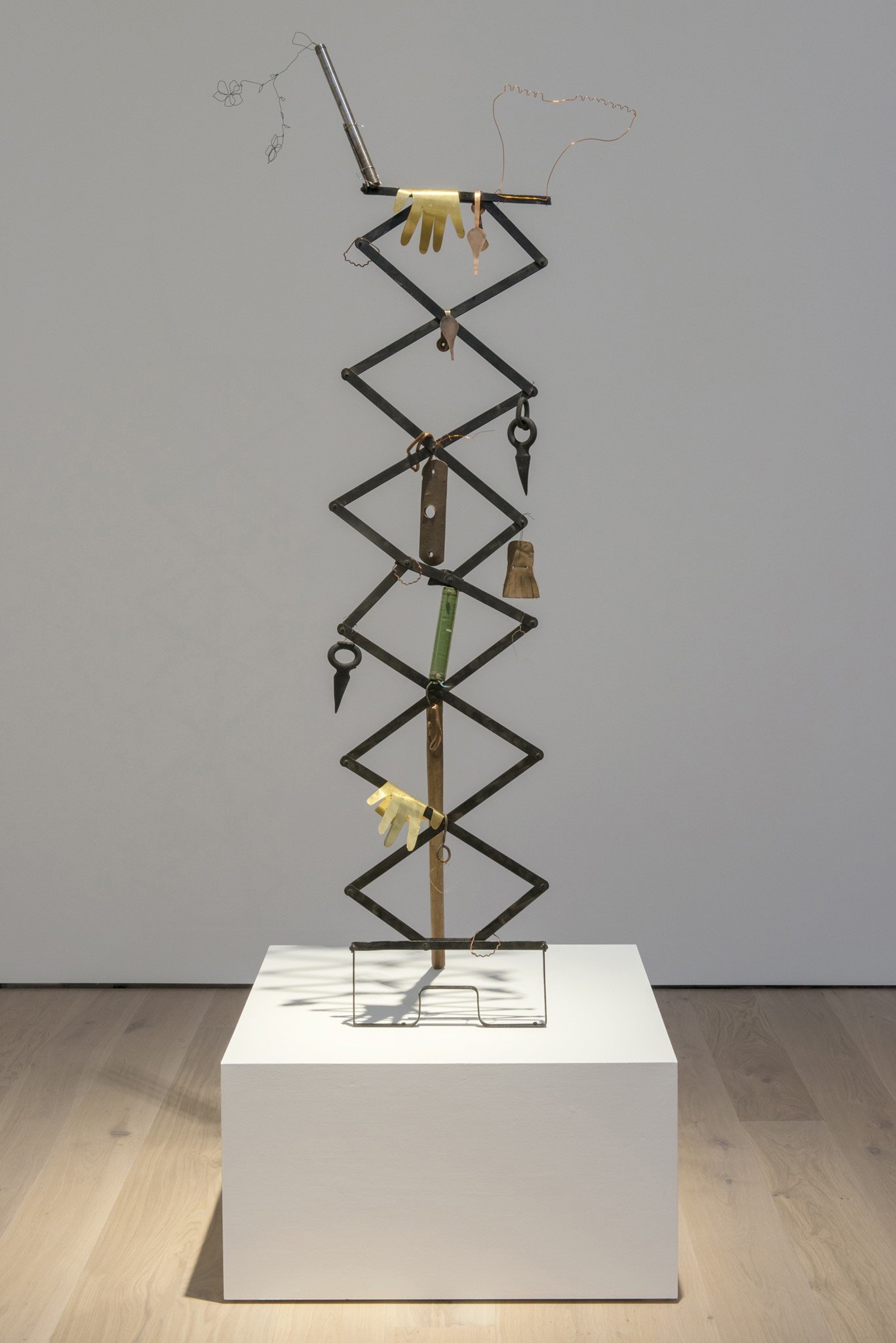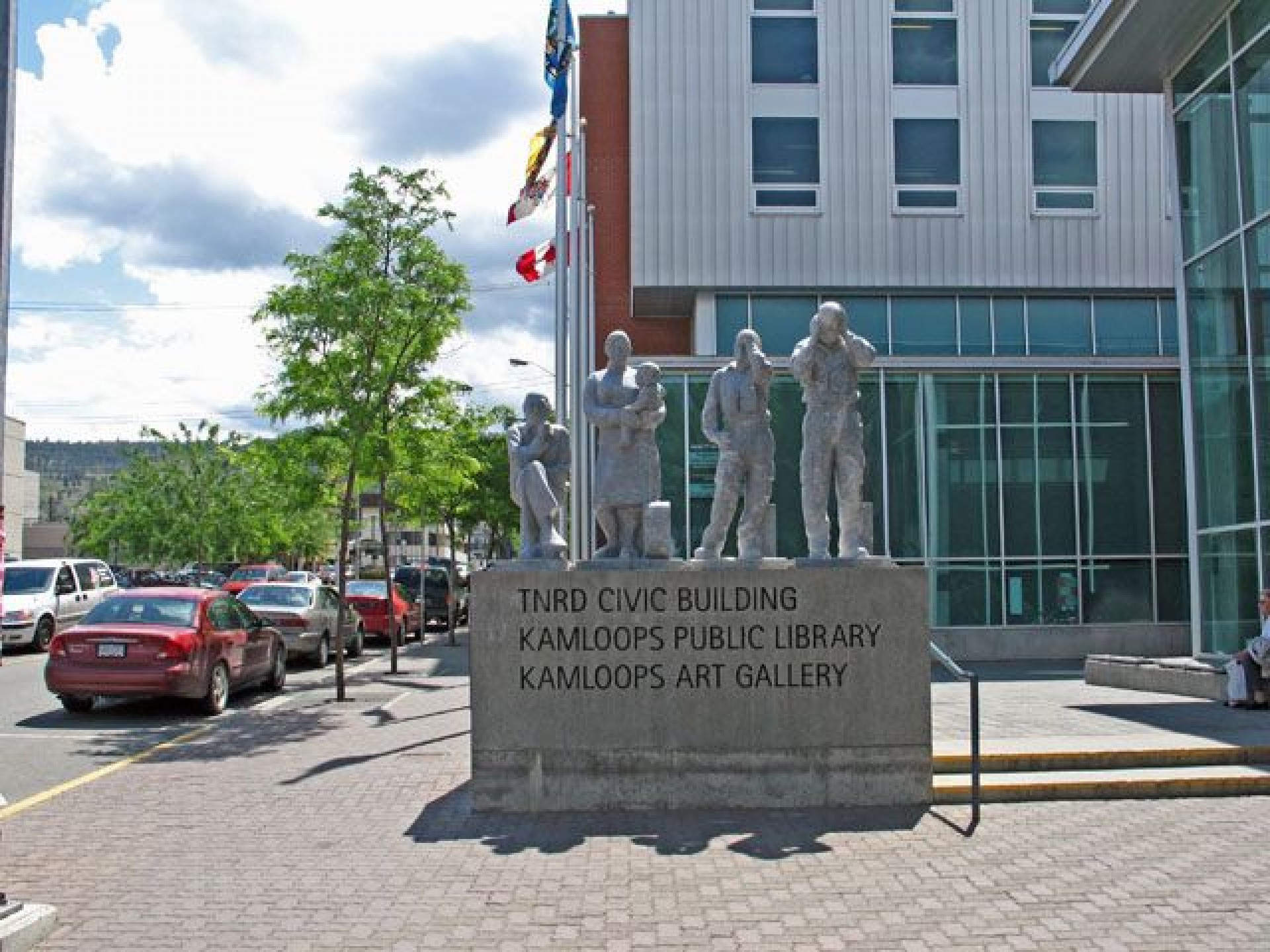
KAG: Town + Country: Narratives of Property and Capital
Sat July 20, 2024 to Wed September 11, 2024Kamloops Art Gallery (465 Victoria St #101, Kamloops, BC V2C 2A9, Canada)
Arts & Culture, Galleries & Exhibits
Visit website for more information
Architects Against Housing Alienation
- Rodney Graham
- Gabrielle L’Hirondelle Hill
- Karin Jones
- Tiziana La Melia
- Carel Moiseiwitsch
- Alex Morrison
- Janet Wang
- Holly Ward
- Tania Willard
- Lawrence Paul Yuxweluptun
Central Gallery
July 20 to September 21, 2024
Morris and Helen Belkin Art Gallery
January 10 to April 13, 2025
Curated by Caitlin Jones, Charo Neville, and Melanie O’Brian
Town + Country: Narratives of Property and Capital troubles the enduring narrative binary of town and country. Borders between these two terrains have always morphed and slipped around each other theoretically, politically, economically, and socially, yet the narrative of the urban/rural divide persists. Indigenous land dispossession and reclamation, capital accumulation in the form of real-estate assets, labour, and technological development are all obscured by this persistent fiction. Town and country narratives similarly obscure questions of class, freedom of movement, and resource extraction.
Art has played a defining role in the narrative. This group exhibition, which focuses on histories and practices in so-called British Columbia, approaches the political, economic, and representational systems at play in our long-mythologized conceptions of this binary of place, through the work of contemporary artists. The narrative’s total erasure of Indigenous sovereignty and other communal approaches to land—systems and protocols that governed (and continue to govern) unceded lands and preceded notions of western property—has had a profound impact. Tania Willard’s Secwepemcúl’ecw, 2009, reclaims the City of Kamloops’s logo and Lawrence Paul Yuxweluptun’s declarative text painting You Are on Indian Land, 2024, emphatically situates the exhibition in territory beyond the limited perspective of town and country.
Bourgeois migration from the industrial city to the country idyll–seen in the British Arts and Crafts movement at the turn of the twentieth century, the back-to-the-land movement of the 1960s, and the most recent pandemic exodus–cycles repeatedly. This conception of “retreat to the country” wherein the country is seen as an unoccupied space of health and freedom continually under threat from its hungry, industrial urban counterpoint, in both instances, hinges on conditions of colonialism, land ownership, and physical labour. As the city increasingly becomes a place of parked capital (in the form of real estate investment) resulting in an urban housing crisis, the country becomes an attractive alternative for many. But the country is not simply a place where artists can enjoy larger studios for a lower cost, it is a place of diverse cultural production and economic imperatives of its own. Obscuring this repeats violent economic cycles of private property and its displacement in a dopplegänger effect. Works by Rodney Graham and Tiziana La Melia invoke these dopplegängers through the tale of the town mouse and the country mouse, the aesthete and the rube, to directly problematize these characterizations. Alex Morrison’s drawings and sculpture examine the ongoing relevance of William Morris’s socialist activism around labour and housing, itself expressed through a romanticized rural aesthetic.
The ongoing colonial land grab and conceptions of property ownership as economic security follow an unsustainable commodity logic. Past and current land use policy continually entrenches the conversion of housing and territory into “assets.” Gabrielle L’Hirondelle Hill’s sculptural works from her Four Effigies for the End of Property, 2017, series consider how stolen land becomes (and remains) colonial property through legal frameworks such as pre-emption and highest and best use. Architects Against Housing Alienation, with their Not For Sale, 2023, project presented at the 2023 Venice Architecture Biennale, point to achievable policy alternatives and ways of reframing that could ameliorate the current critical housing crisis across Canada.
The perceived separation of urban from rural, country from city has, in addition to fueling land dispossession and privatization, hidden the mass exploitation of human capital. Holly Ward’s Monument to the Vanquished Peasants, 2016, points us back in time to the feudal shift from land as a public commons to private enclosures and its impact on peasant labourers and economies. In her installation Points of Entry, 2021, Janet Wang considers histories of Chinese workers in British Columbia, as the railway, necessary to open up the Province for further extraction and exploitation, was built through their indentured labour. Karin Jones’ sculptural installation aestheticizes the farming implements of rural labour as tools of both complicity and resistance.
The rapidly unfolding climate catastrophe may render moot any distinction between city and country, as floods and fires destabilize established systems of property and value. Carel Moiseiwitsch relocated from the city to the country, only to be forced back to the city as a result of a devastating wildfire in Lytton, BC, that destroyed her home and her life’s work. Her fire paintings capture the violent endgame of ongoing capital accumulation.
The works in this exhibition subvert rural and urban binaries to offer gestures of refusal and resistance. Through the inextricable entanglement of town and country’s histories, nostalgias, and futures, the exhibition reflects on a critical reframing of conceptions of “land use” across disciplines. Our moment requires a radical rethinking of property, territory, occupation, and ownership, and these artists and activists can help do this.
The Kamloops Art Gallery and the Morris and Helen Belkin Art Gallery sites offer a dialogue between the binaries of town and country as well as on the structures of settler colonialism on unceded Indigenous territory that define our institutions.
Town + Country: Narratives of Property and Capital is co-organized by the Kamloops Art Gallery and the Morris and Helen Belkin Art Gallery, curated by Caitlin Jones, Charo Neville, and Melanie O’Brian.

About Kamloops Art Gallery
Click for more information and events for Kamloops Art Gallery
The Kamloops Art Gallery is a registered charity and not-for-profit society.
Incorporated in 1978, the Kamloops Art Gallery serves residents of and visitors to Kamloops (pop. 82,000) and the surrounding Thompson-Nicola Regional District (pop. 124,000) as well as national and international audiences.
In 1998, the KAG moved to a purpose-built civic building, designed by award-winning architects Peter Cardew and Nigel Baldwin, which also houses the Thompson-Nicola Regional District offices and the Kamloops branch of the TNRD Library System. The 20,853 square foot Gallery includes 4,500 square feet of exhibition space, an admissions/store area, two multipurpose studio/workshop/lecture rooms, a packing and acclimatization area, the collection storage vault with an adjoining workroom and, on a mezzanine above, administration and curatorial offices along with a research library. In 2006, the KAG was designated a Category “A” institution under the Cultural Property Export and Import Act.
The Gallery’s annual attendance has ranged between 24,000 and 37,000 over the last five years. It enjoys a national reputation for its touring exhibitions and publications and has developed relationships with national and international artists, curators, critics and scholars. The KAG is also well respected for its exhibitions, events and educational and public programs through activities organized and presented in the community and region involving both contemporary and historical art. Its collection as of December 2012 consists of 2,700 works that primarily reflect the Gallery’s exhibition history. In 2005, the KAG co-commissioned with the University of British Columbia’s Morris and Helen Belkin Art Gallery Canada’s participation in the 51st Venice Biennale with the work of Rebecca Belmore.
Governed by a Board of Trustees, the KAG maintains an effective organizational structure that includes a Management Team led by the executive director, a Program Team led by the curator and a Development Team led by the manager of operations. Teams meet monthly to report, evaluate, problem solve and plan.
Vision
The Kamloops Art Gallery brings art, artists and communities together.
Mandate/Mission
The Kamloops Art Gallery is the principal gallery in the Southern Interior of British Columbia supporting contemporary and historical visual arts and practices on a local, national and international level. The KAG acknowledges art to be an essential part of the human experience in nurturing a healthy society. As a leading cultural institution, the KAG is an integral part of the fabric that draws intellectual, social and economic opportunities to our province and to our region.
The Kamloops Art Gallery fosters enjoyment of and interest in the visual arts by researching, developing and producing exhibitions, publications and programs that engage, challenge and inform its various audiences. The Gallery also oversees the development and preservation of a permanent collection that includes regional, national and international art in all media. It also strives to create rewarding opportunities for visual arts professionals and the public.
Guiding Principles
- Committed to art, artists and audiences
- Collaborative, respectful and ethical
- Tolerant, inclusive and diverse
- Relevant to local and regional communities
- Striving for excellence
- Fiscally responsible
- Sustainable
